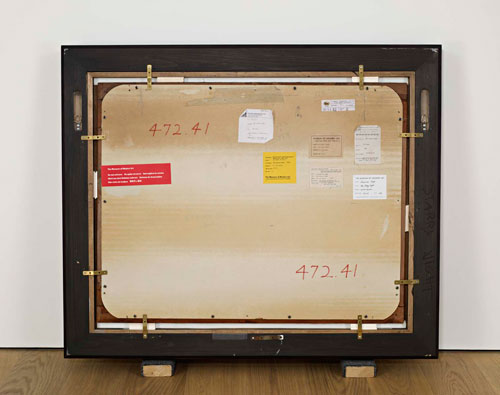Usually, when thinking about frames we think about them from the front, right? While it’s counter-intuitive, the back can offer just as much to see as the front, especially with famous works of art.
The artist Vik Muniz had an amazing show a couple years ago where he reproduced to scale, inch-by-inch, the backs of world-renowned paintings like Starry Night, Les Demoiselles d’Avignon, and American Gothic. The pieces are so precisely forged it would be nearly impossible to tell them apart from the originals. Unless of course, somebody looked at the back… which would be the front of the painting… but the back of this work.
Vik Muniz
Verso (Starry Night), 2008
Mixed media object
29 x 36.25 x 12 inches
In the press release, Muniz explained:
Whenever someone wants to see if an artwork is ‘real’, the first gesture is to look at its back or at it’s base; the part of it that normally isn’t visible to anyone else but experts, dealers, museum conservators or the artists’ themselves. This happens because while the image’s objective is to remain eternally the same, its support is constantly changing, telling its story, showing its scars, its labels and periodic clichés. So when a cousin of mine told me his 7-year old could paint a Picasso, I told him ‘probably, but he couldn’t do the back’. As a teenager, I used to fix the neighbor’s TV as a hobby. I wanted to learn how to fix clocks too. Whenever something’s function is basically visual, there is always an opening in the back for the curious to do it damage.
-Vik Muniz in an unpublished interview, 2005
Here’s a link to the rest of the work. http://www.sikkemajenkinsco.com/vikmuniz_viewexh3.html
I really wish I could see what the backs (fronts?) of those pieces. What could they be? Paintings? Another back?
So, if the whim strikes you, turn around your frames today and see what’s going on back there.

